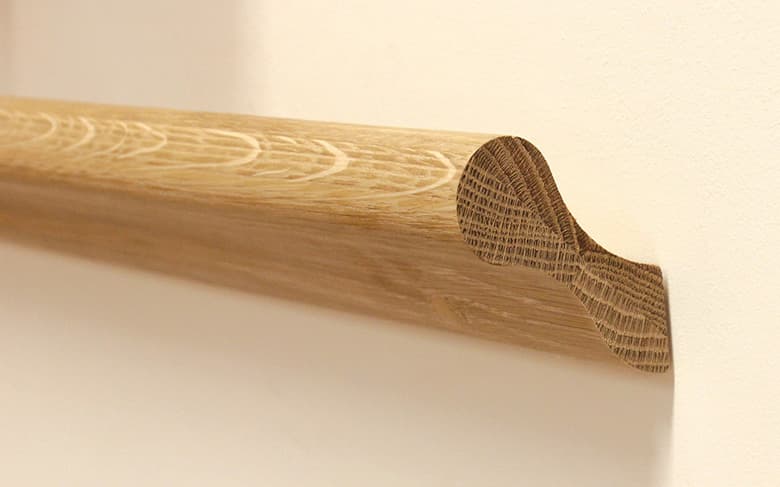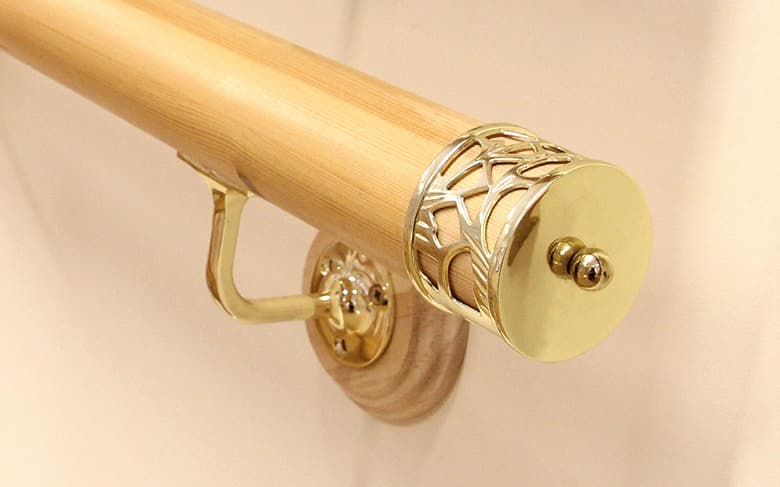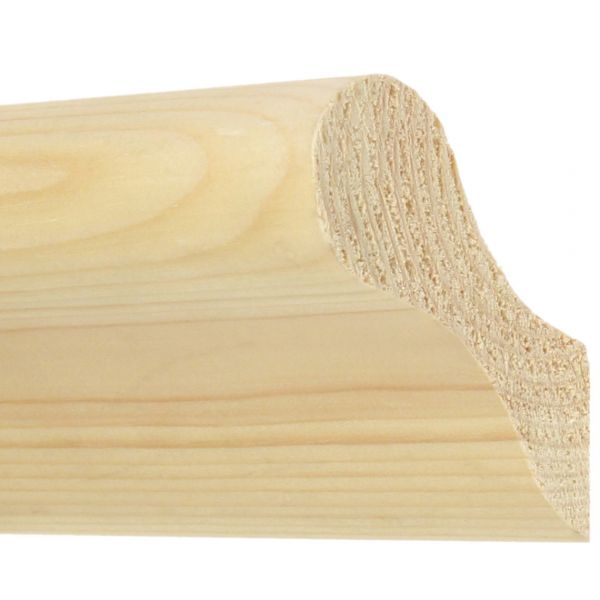How to fit a pig's ear handrail | What do you need?
Aside from their simple appearance, flexibility and cost, pig's ear handrails are a very popular choice of handrail because of their affordability and versatility. Pig's ear handrails can be made from a variety of different kinds of woods. One of their key advantages is that they do not need brackets to be attached to the wall, which saves a lot of space. If you're considering buying a pig's ear handrail for your staircase, and want to know what accessories you need and how to fit the handrail to a wall, we're here to help.
In this guide, you will discover how to choose the right type of pig's ear handrail, how to fit one, and what is required.
Click on a link to jump to each section:
Find out more about the uses of a pig’s ear handrail
Both handrails have their benefits, but which style you prefer depends on whether you want your handrail to attach directly to the wall and whether you have a narrow staircase
Discover the best way to fit your new handrail
Find out the appropriate dimensions when installing your handrail
There are various different elements to consider when choosing the perfect handrail for you
Here are some various items that can help your handrails maintain their finish for longer
Find out why shopping with Jacksons is the best choice for you.
What is a pig's ear handrail used for?
A pig's ear handrail is a wall mounted handrail, and is ideal if you have a narrow staircase. Pig's ear handrails do not need railing brackets and may be installed directly on the wall, saving time and money. If you have a narrow staircase, pig's ear railings are a particularly good alternative to consider. They have a distinctive style and shape, and can be used to complement a variety of different interior styles.

How do pig's ear handrails compare to mopstick handrails?
Mopstick handrails are attached to the wall with the help of wall handrail brackets, making them a popular option for buyers searching for a handrail that might be more ornamental.
When installing a mopstick handrail, you'll need to select some handrail brackets that are complementary to your handrail's style and finish. Mopstick handrails also often require accessories such as end caps and wall patrices – so pigs ear handrails can save you time and money in this sense.

How do you fit a pig's ear handrail?
One of the many benefits of pig's ear handrails is that they don't need accessories such as brackets like mopstick handrails. They can screw directly into the wall, using cross grain pellets to fill the holes and hide the screws. Before installing a handrail, you should measure the length of your staircase to check the size you require.
UK building regulations state that a handrail should ideally be fitted between 900mm and 1000mm above the stairs. Once fitted, your handrail should be sturdy and secure, and shouldn't be loose. If you are still unsure, or you would like a professional opinion, get in touch with us today.
If you're not sure how to measure for a pig's ear handrail, make sure to get in touch with our expert team at Jackson Woodturners for support. You can also take a look at our helpful pig's ear handrail guide here.
How do you choose the right pig's ear handrail?
When choosing between pig's ear handrails, it is important to consider the different sizes available, as well as the material of the handrail, your desired budget and cross-grain pellets.
If you don't have a large budget, consider opting for a more cost-effective wood such as pine. This way, you can still achieve a classic wood finish without having to compromise on price. If you have the budget to spare, oak is a premium choice that can bring elegance to your staircase. You can browse our full collection of oak handrails and accessories here.

There are various different materials and designs that you can choose from when deciding upon the perfect handrail. Although pine is one of the cheaper options, there are other wood types including walnut and hemlock that can make a statement in your home. However, you should always check to see whether the material is within your budget.
Caring for your pig’s ear handrail
Maintaining your handrail in the proper manner is critical to ensure that it will withstand the test of time. No matter which material you go for, you can help maintain the wood by treating your handrail to a base coat of Treatex Hardwax Oil. The use of Treatex is also essential in order to bring out the inherent beauty of your wood while also preserving it and keeping it looking new.
You can shop our full Treatex range here.
Benefits of shopping at Jacksons
You'll have access to incredible customer service and a large range of pig’s ear handrail materials, pellets and styles at competitive prices if you shop with Jacksons. At Jackson Woodturners, our team aims to offer you a service that goes above and beyond when helping you pick out your new pig’s ear handrail. So, make sure to browse our website today and get in touch with our expert team for more advice and support.





